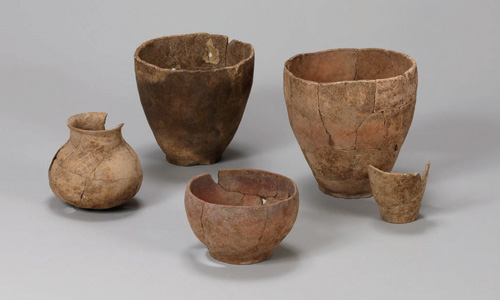Dolmen and the Bronze Age


Dolmen and the Bronze Age
 Plain earthenware of the Bronze Age
Plain earthenware of the Bronze Age
Plain earthenware of the Bronze Age
Plain earthenware popular in the Bronze Age
Unlike comb-pattern earthenware in the Neolithic Age, plain earthenware with a flat bottom and almost no patterns on the surface was popular in the Bronze Age. Unlike other regions, jar-shaped earthenware with an open mouth was widely produced and used in the Songguk-ri residential culture of the Hoseo and Honam regions. Bowls used in daily life, such as cooking, storage, and dishes, were made of coarse clay mixed with sand or stone powder and baked in an outdoor kiln, giving it a reddish-brown color. When making earthenware, the method of polishing the surface remains, and the water treatment technique, in which the surface is evenly prepared with leather or cloth, was widely used. earthenware buried in graves, unlike those for real life, is mostly red-polished earthenware made by painting the shape of a small pot with iron oxide and rubbing the surface well.